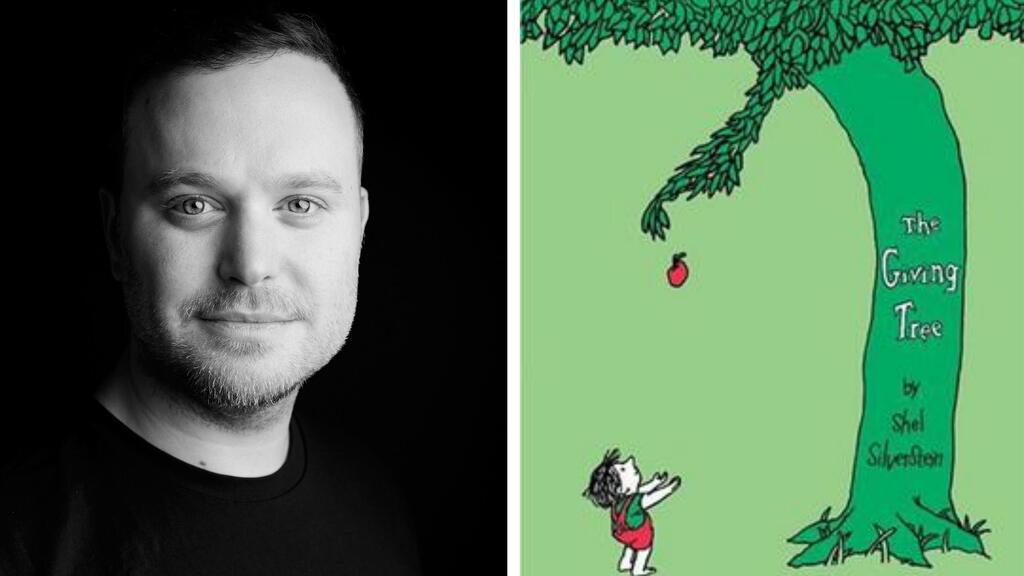
BiblioTech
CTech’s Book Review: Achieving equilibrium with our work/life balance
Ifty Kerzner, Co-Founder and President of Kissterra, shares insights after reading "The Giving Tree" by Shel Silverstein
Ifty Kerzner is the Co-Founder and President of Kissterra, an IT company that harnesses data to provide a solution for insurers’ marketing and distribution needs. He has joined CTech to share a review of "The Giving Tree" by Shel Silverstein.
Title: "The Giving Tree"
Author: Shel Silverstein
Format: Book
Where: Home
Summary:
“The Giving Tree” is a simple, yet deeply insightful tale centered around an overly generous tree and her relationship with a boy. The tree’s affinity for the boy begins with him playing on her branches and spending time underneath her shade. Their contact becomes sparser as time goes on. As he ages, the boy grows insatiable and only comes to ask the tree for material goods, believing it will make him happy. First, giving him all her apples, then her branches, and finally her whole trunk; all the while longing for him to return to her branches and play. Finally, the boy has grown into an old man and returns to the tree, but she has nothing left to give him. The only thing she can offer is a place to rest on her stump, which the boy accepts, and the tree is happy.
Important Themes:
The relationship between the boy and the tree can represent several types of connections, perhaps parental, or between society and nature: one side exploiting the other. This book is a condemnation of not just greedy and dissatisfied individuals looking to satiate their needs with material possessions, but also of those who blindly give themselves to others to make them happy. Silverstein confronts the reality of aging and discontentment in society, depicting the tragedy of chasing material goods and realizing only when it’s too late that it never led to happiness. On the flip side, he displays the destruction that limitless generosity creates.
Readers can accept the tale as a warning about mutually harmful relationships, leaving both sides in a state of loneliness and disappointment. The boy is not getting what he wants from material goods, but the tree is simultaneously left without acknowledgment and reciprocation of the love that she so freely gives. However, the bitter reality of the unhappy old man and the barren tree trunk does not end unhappily. The tree, without anything material left, gives the boy what she always wanted, and she receives his recognition. Depleted and weak, the tree is happy nonetheless despite all the boy has taken from her; the altruism that she possesses continues, and only when she has nothing left to give, they can appreciate each other.
Related articles:
What I’ve Learned:
In the tech ecosystem, it can feel like those running a company need to give their heart and soul to stay ahead and be successful. We must sacrifice our personal lives, time with friends and family, sleep, and overall well-being, but no matter how much an individual gives of themselves physically and mentally, there is always a demand for more of your time and energy.
On the flip side, many executives embody the boy as well, seeking out material gain and exploiting others to build something they believe will bring them happiness. Both personas are destructive, and we must learn to create boundaries and develop a healthy relationship with our work and those around us.
It can be difficult to discern where exactly the point of being dedicated or hard-working turns physically and personally destructive, but it’s important to break the pattern before it grows into something unmanageable. The book gives every person an important reminder of what a healthy exchange should look like and reconsider the acts of giving and receiving. Silverstein tells us that an altruist can only be happy once they have dispossessed themselves, and the dissatisfied can only achieve contentment when they stop asking for more.
In our professional lives, it’s important to stop and reflect on what we give up and what we ask for to achieve personal satisfaction in the companies we build and the people we connect with.
Critiques:
Regarding my relationship with my company, I’m currently closer to being the tree rather than the boy in the story. I’m constantly working hard on reminding myself that by devoting all of myself to my work, there’s a real risk of losing meaningful relationships, especially with my wife and one-year-old son. There’s no amount of money or success that’s worth not being around to see my son grow up. And yet, I’m writing these lines from my office, late at night after another day of not seeing my son. There is still a long way to go.
Who Should Read This Book:
As a new father, I’m always on the lookout for children’s books with meaning that will pass on valuable lessons to my son and future children. Silverstein’s book imparts valuable lessons as my children will mature about where to draw the line with generosity. Although the intended audience for “The Giving Tree” is typically children, the messages and themes are applicable to everyone. For business leaders and entrepreneurs, the book makes you think about where to draw the line with your work, employees, or other business pressures, create a healthier work/life balance, and improve your work culture without unhealthy or unreasonable expectations.